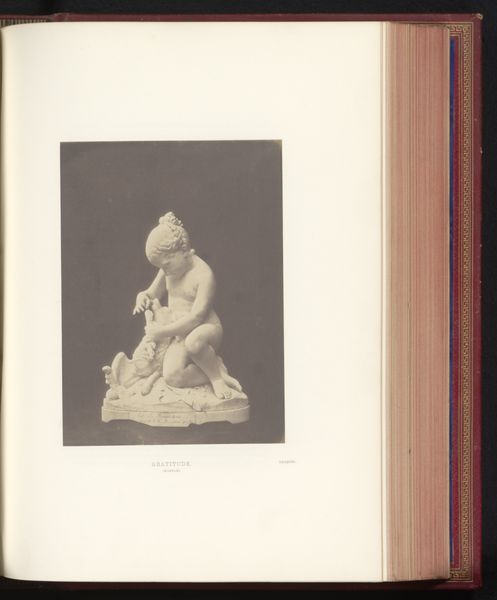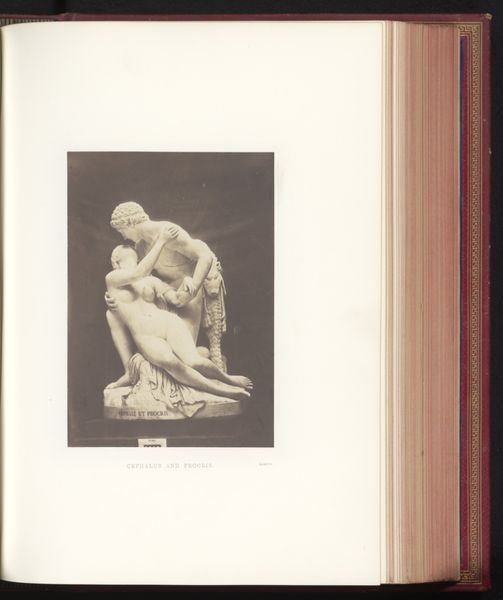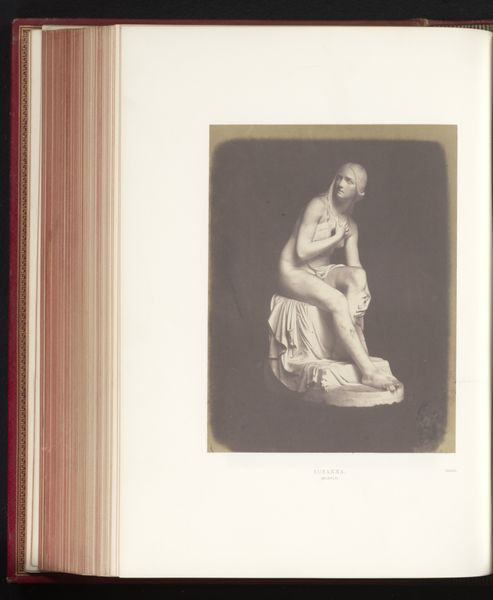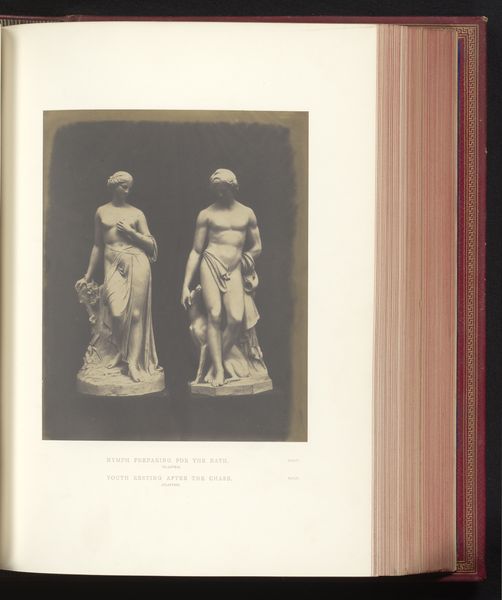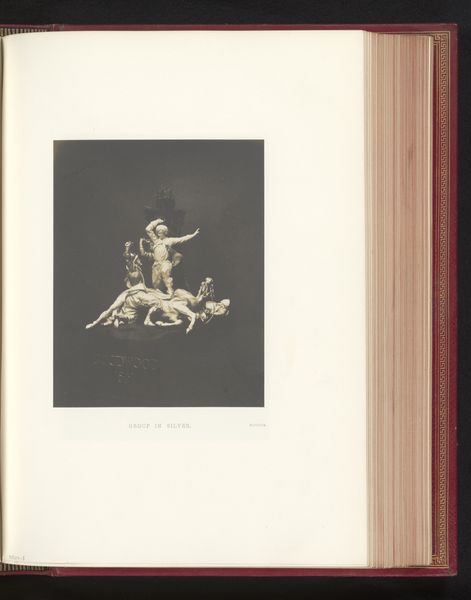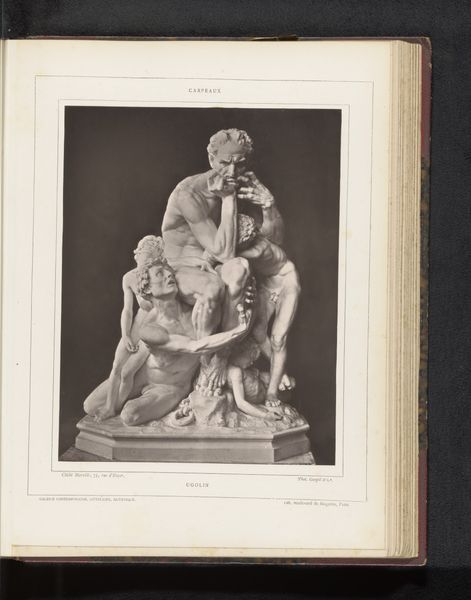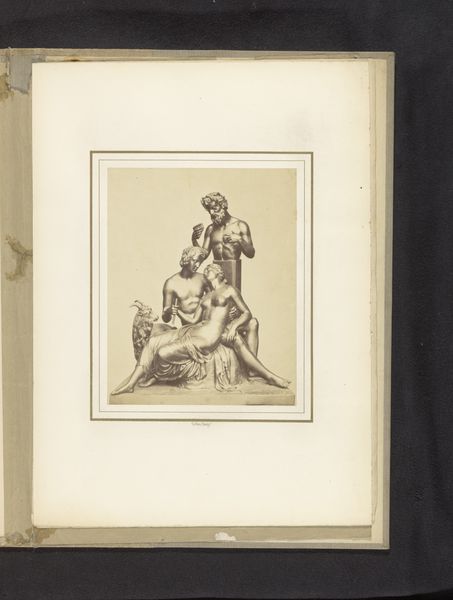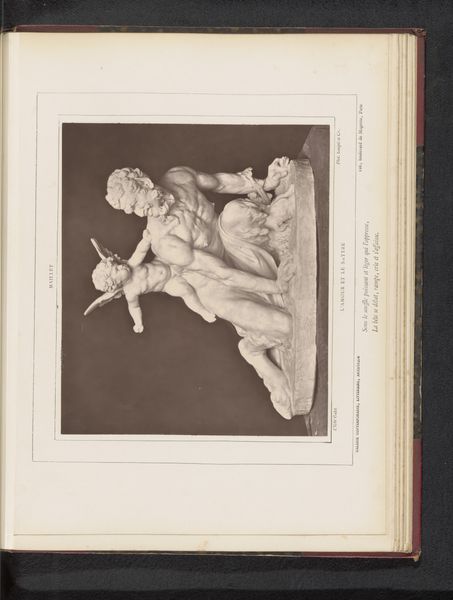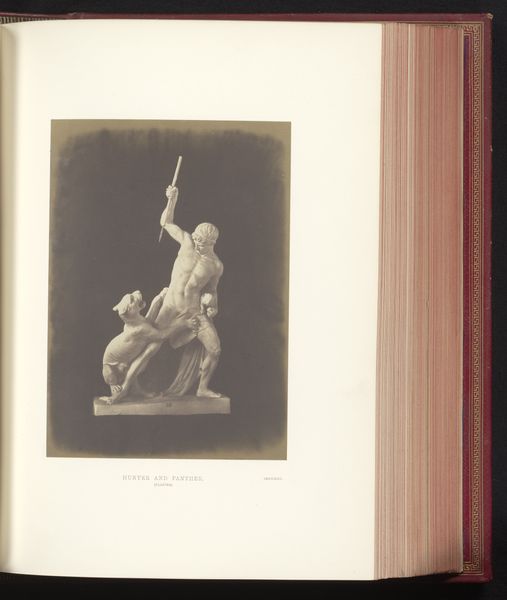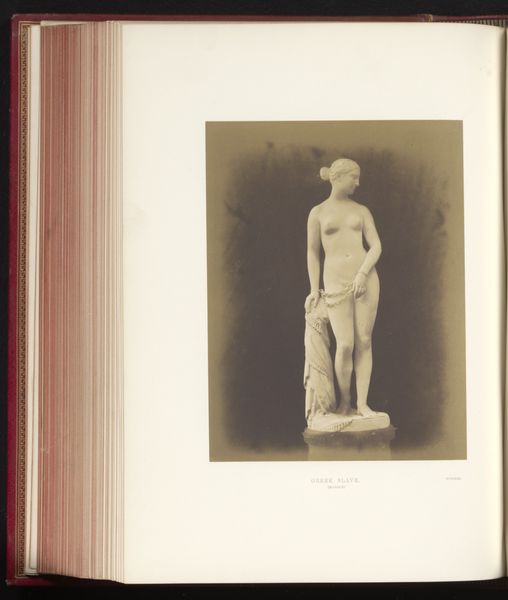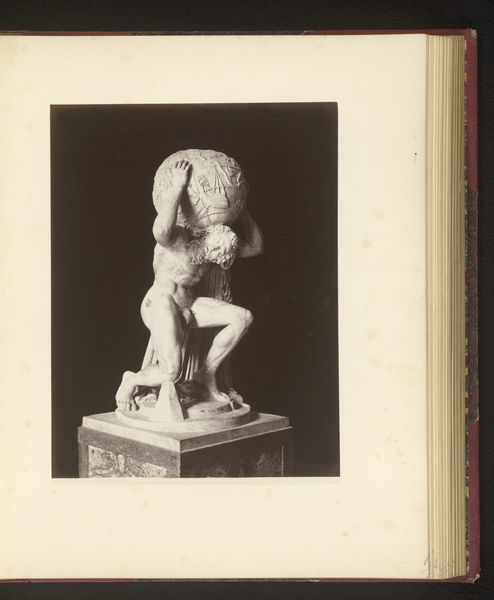
Sculptuur van Kaïn met zijn familie door Antoine Étex, tentoongesteld op de Great Exhibition of the Works of Industry of All Nations van 1851 in Londen 1851
0:00
0:00
sculpture, marble
#
portrait
#
neoclacissism
#
figuration
#
sculpture
#
group-portraits
#
history-painting
#
marble
Dimensions: height 212 mm, width 151 mm
Copyright: Rijks Museum: Open Domain
This photograph shows Antoine Étex's sculpture of Cain and his family, exhibited at the Great Exhibition in London in 1851. The original sculpture was carved from stone, most likely marble. The choice of material and subject matter places it squarely in the tradition of European fine art. Stone carving is a labor-intensive, subtractive process, requiring specialized skills and tools to transform a raw block of stone into a finished form. The muscular figure of Cain and the idealized forms of his family reflect classical ideals of beauty and heroism. The sculpture’s presence at the Great Exhibition is significant. This event was intended to showcase the achievements of industrial nations, celebrating technological progress and mass production. By displaying a hand-carved sculpture, Étex positioned himself in relation to these developments, emphasizing the enduring value of artistic skill and craftsmanship in an age of increasing mechanization. In this context, the sculpture also raises questions about labor, class, and the changing nature of work in the 19th century. By considering the materials, making, and context of this artwork, we can better understand its full meaning and significance, challenging traditional distinctions between fine art and craft.
Comments
No comments
Be the first to comment and join the conversation on the ultimate creative platform.
